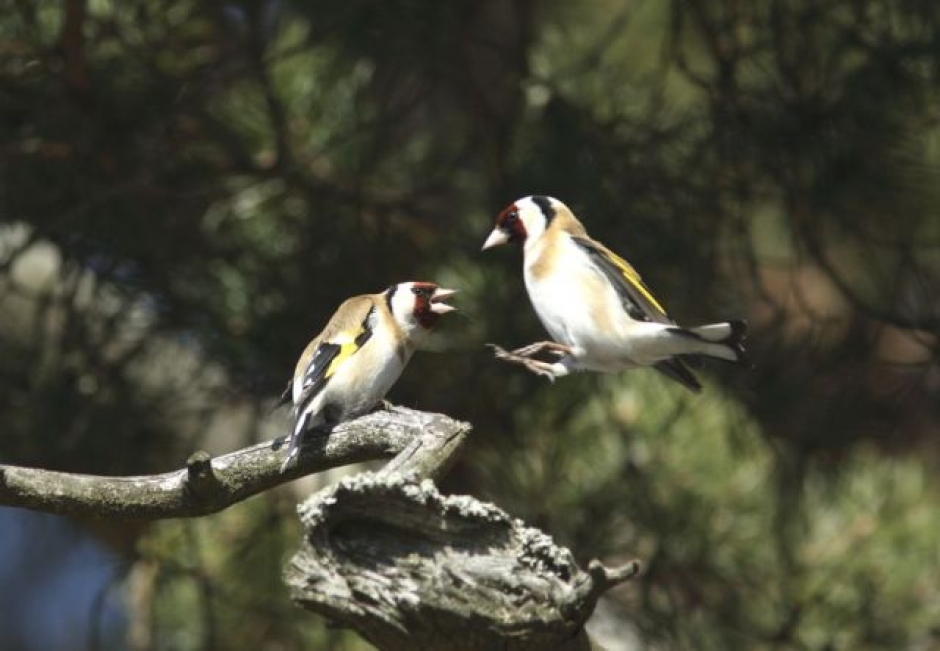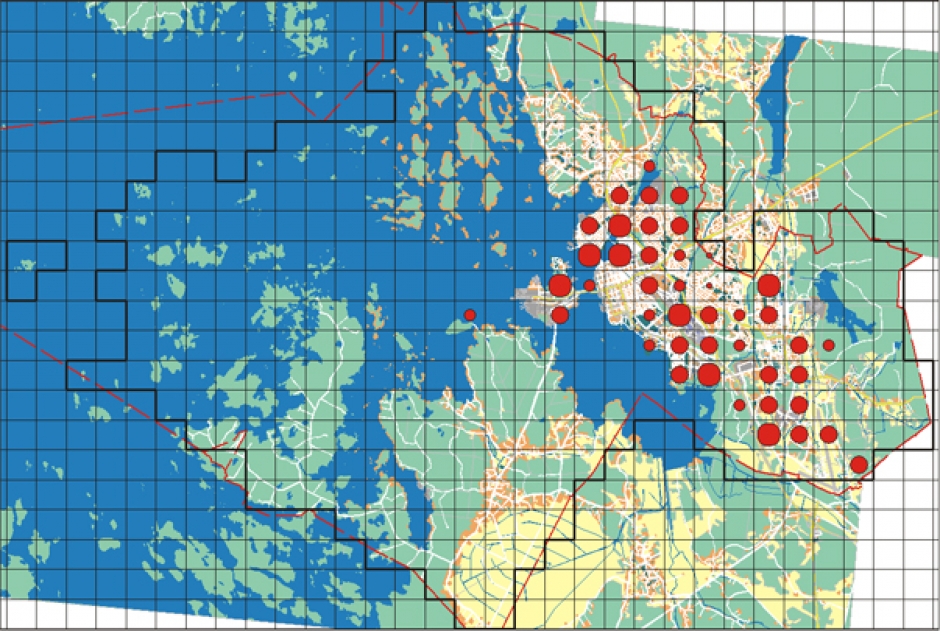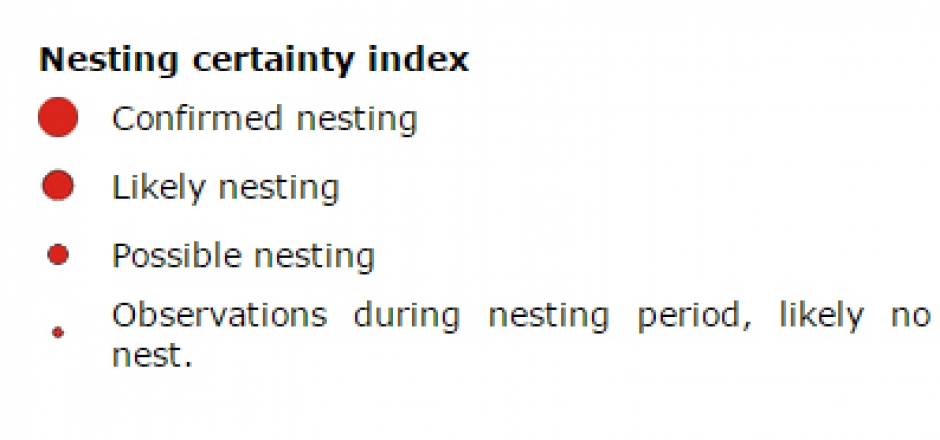European Goldfinch
Carduelis carduelis

General information. The European goldfinch is a sparse bird species in cultural landscape areas, being relatively new to the Finnish avifauna. The nesting population has varied somewhat during the past few decades. A suggested cause for this has been annual variations in weather conditions.
The majority of European goldfinches migrate to southern and Central Europe for winter. The remainder of the population forms in flocks consisting of about ten goldfinches, moving to marginal lands and weed infested terrain, where they forage for seeds from aments.
- Length 14 cm
- Nests in trees and bushes
- Partially migratory species. A proportion of the population migrates to western Europe
- Feeds on seeds and insects
Habitat. The European goldfinch nests in gardens, parks, housing plots and marginal lands. It is not as strongly tied to disturbed soil areas as the linnet but such areas do, however, form valuable foraging areas for the goldfinch. Similarly to the linnet, pairs of European goldfinch often nest close to each other.
Distribution in Vaasa. The European goldfinch thrives in parks, detached housing areas and various types of uncultivated terrain. It can be most easily found in Vaasa during the nesting season, dwelling in areas such as the old landfill in Suvilahti or by the cemetery by Onkilahti. Nesting goldfinches were observed in approximately 43 survey blocks in Vaasa.


